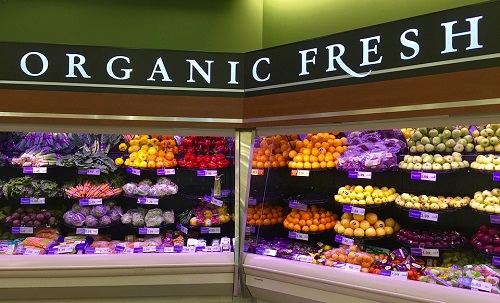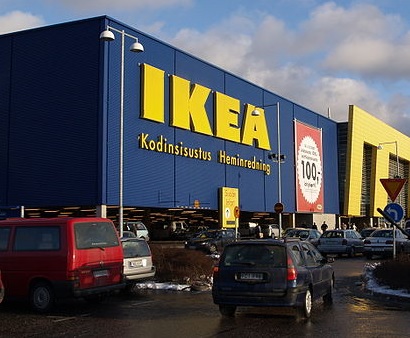Quick response codes may soon be a prime way to identify which products contain GMO ingredients.
A huge debate is currently raging over the use of food label QR codes to reveal the presence of GMO ingredients. Supporters think this is a quick and easy way to provide consumers with this information. Those opposed feel that it is not enough to make the presence of GMO ingredients known.
A new law has been signed by President Barack Obama that requires GMO foods to be clearly labeled.
This law tells food manufacturers that they must show when genetically modified ingredients are used in their products. It must be presented in plain writing, include an icon created by regulators, or offer information via food label QR codes. That said, healthful food advocates have said that the quick response codes place a barrier between the consumer and the labeling information they need.
Food label QR codes would require the consumer to use a smartphone or tablet to scan with a dedicated app.
 The advocates would like GMO ingredients to be labeled more explicitly than that. If a QR code scan is required in order to obtain the information, not all consumers will be able to easily access it.
The advocates would like GMO ingredients to be labeled more explicitly than that. If a QR code scan is required in order to obtain the information, not all consumers will be able to easily access it.
According to the Just Label It advocacy group chairperson, Gary Hirshberg, “It is my hope that food corporations reject high-tech gimmicks like QR codes.” Similarly, the Organic Consumers Association activist group has launched a new online petition. The petition against the labeling law that allows GMO disclosures through barcodes currently has over 500,000 signatures. That total was achieved in its first week, and the number continues to grow.
At the same time, food manufacturers insist that using food label QR codes is not for deception. There is no subterfuge in their goals, they say. Food Marketing Institute senior vice president of industry relations, Mark Baum, said “I think it’s a red herring,” of the law’s critics. That institute conducted a study which revealed that only one in five American consumers will scan quick response codes to learn about food products. That said, Baum feels that the number of scanning consumers will rise as more detailed information becomes available through this method.
The world’s largest furniture retailer is trying out a new QR code pilot program.
IKEA is well known for being an innovative and forward-thinking company and its new quick response codes (QR codes) mobile checkout system, which it is currently piloting in France, is no exception. If all goes according to plan, the new system will make it much easier and faster for customers to checkout at physical stores.
Customers can use their smartphone cameras to help improve their shopping experience in-store.
The new system merges online shopping with brick-and-mortar shopping by requiring customers to use their smartphones while shopping in the store and at checkout.
 How it works is quite simple. Using an IKEA app, customers scan the items they intend to purchase from the store with their mobile phone and place the items in their cart as they shop. Once they reach the checkout point, the app combines all the items they’ve scanned to obtain the total purchase. From there it generates a QR code. This unique quick response code is scanned at checkout, so the customer can pay for their purchase with quick ease.
How it works is quite simple. Using an IKEA app, customers scan the items they intend to purchase from the store with their mobile phone and place the items in their cart as they shop. Once they reach the checkout point, the app combines all the items they’ve scanned to obtain the total purchase. From there it generates a QR code. This unique quick response code is scanned at checkout, so the customer can pay for their purchase with quick ease.
With only one scan required, quick response codes make the checkout process at IKEA a breeze.
Such a system is highly convenient for a store like IKEA where it is not uncommon for customers to purchase several large items that can be awkward to scan individually at checkout. This is especially the case if the barcode of a large and heavy item that needs to be scanned has been placed upside down in the cart. The new mobile checkout system eliminates this hassle.
IKEA’s global head of mobile solutions, Victor Bayata, said that what IKEA is looking at is “giving the customer the power to decide what to do and where to take the next step.” Bayata added that “What we need to do, and this is again the formula that everyone tries and tests, is that we need to understand our customers’ needs and wants.”
He explained that understanding how to combine the online experience with how people act in the store is how the company will provide their customers with “services that make sense.”
If the pilot project proves successful in France, the quick response codes checkout feature at IKEA is likely to be tried at other store locations and could make shopping in physical stores more attractive to customers, improving their overall in-store shopping experience.
 The advocates would like GMO ingredients to be labeled more explicitly than that. If a QR code scan is required in order to obtain the information, not all consumers will be able to easily access it.
The advocates would like GMO ingredients to be labeled more explicitly than that. If a QR code scan is required in order to obtain the information, not all consumers will be able to easily access it.
 How it works is quite simple. Using an IKEA app, customers scan the items they intend to purchase from the store with their mobile phone and place the items in their cart as they shop. Once they reach the checkout point, the app combines all the items they’ve scanned to obtain the total purchase. From there it generates a QR code. This
How it works is quite simple. Using an IKEA app, customers scan the items they intend to purchase from the store with their mobile phone and place the items in their cart as they shop. Once they reach the checkout point, the app combines all the items they’ve scanned to obtain the total purchase. From there it generates a QR code. This 